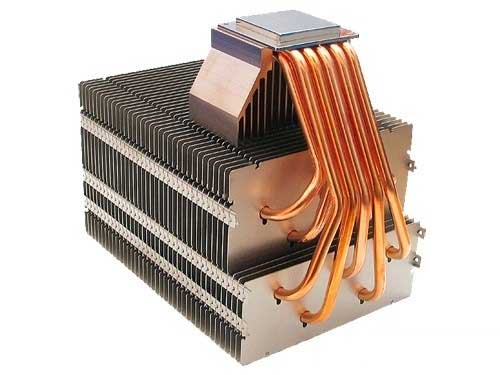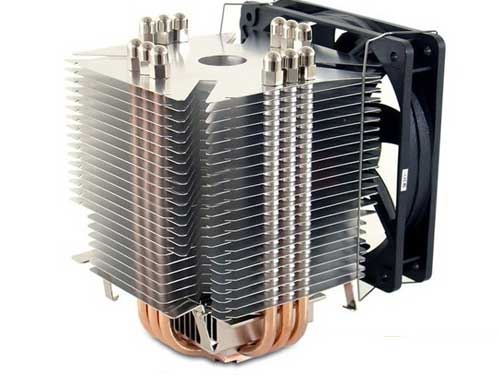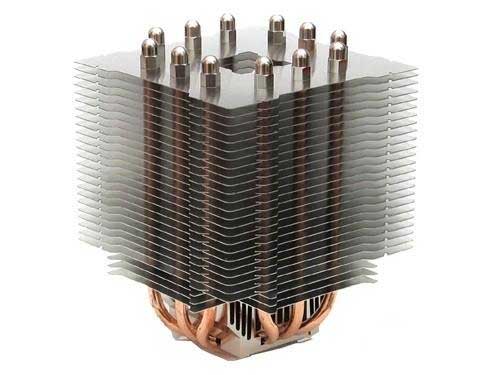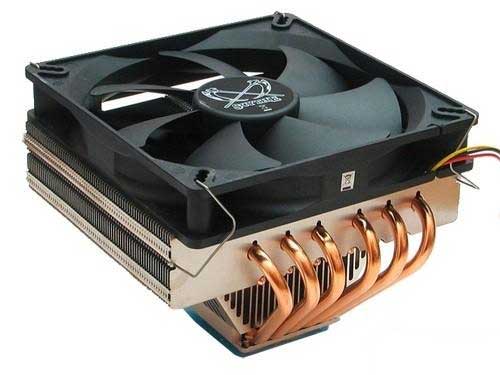Top 10 Classic Radiator Reviews of Heat Pipe Craftsmanship
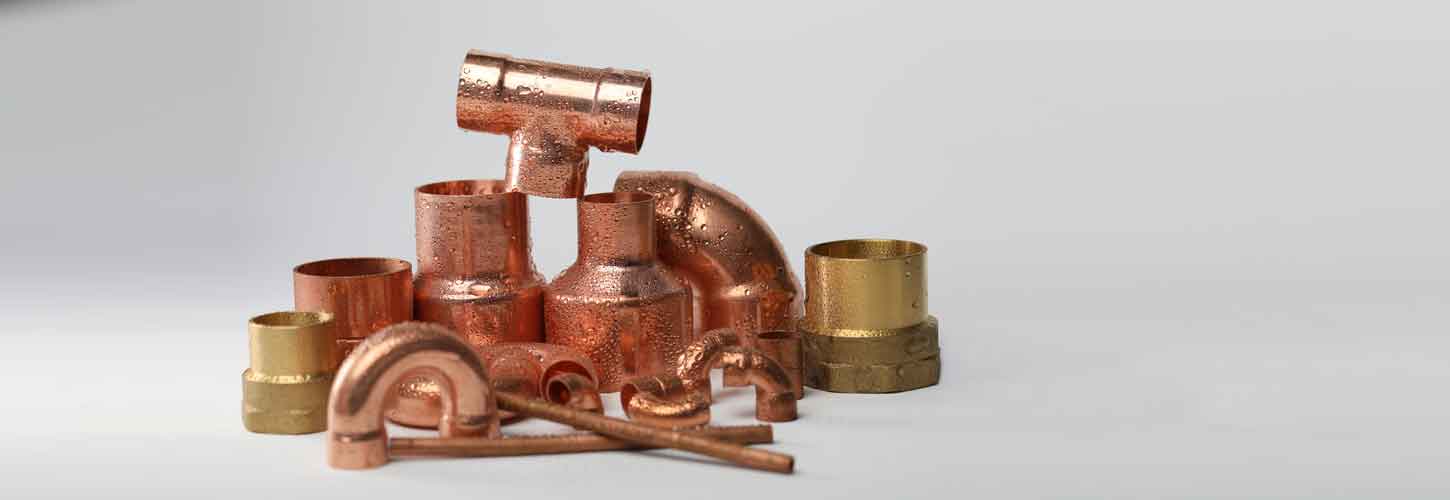
Moore's Law dominates the continuous and rapid growth of the number of transistors in silicon chips, but also determines that the power consumption of chips will continue to increase. With the development of the CPU continues to evolve.
Although the development of the radiator is not as vigorous as that of the CPU, the ever-changing metal art of the radiator is more worth pondering. The reason is very simple. If the CPU is getting smarter and smarter, the radiator is getting more beautiful. The latter is obviously more exciting.
Most of the initial radiator products are made of aluminum backlog. These horizontal radiators are difficult to expand due to compatibility, and they are unable to face the soaring frequency of Pentium 4.
Since 2002, the tower radiator has gradually replaced it, until now it dominates the world. If the backlog process represents the past of radiators, and liquid cooling and semiconductor refrigeration represent the future of radiators, we are undoubtedly in the peak era of heat pipe radiators.
The rise of heat pipes has played a decisive role in the mainstream of tower radiators. It has catalyzed the birth of countless classic heat pipe radiators. Classic heat pipe radiators of all dynasties represent the understanding of heat dissipation design by major manufacturers. They interpret the use of heat pipes from different angles. Ideal, so today we use them as a textbook on heat pipe craftsmanship.
There are not many classic radiator products recognized in the world. These classic radiators not only have a strong visual impact, but they explain what is high-end for the industry and inspire us to rethink the design concept of radiators.
How heat pipes work
The heat pipe was first used in the military and aerospace fields because of its excellent thermal conductivity. It is not actually the best heat dissipation material, but it can conduct heat more effectively than copper and aluminum, and the production cost is getting lower and lower. Low cost and high efficiency are one of the reasons why heat pipes are widely used. Another reason is that they can be used with tower radiators to raise the fins to expand the size of the huge fins without affecting compatibility. what a radiator can't do.
The combination of tower structure and heat pipe pushes the air-cooled radiator to a new level, giving birth to some products that we are familiar with.
The inside of the heat pipe has a capillary structure as shown in the figure below, the inside is evacuated, and the filling liquid is usually pure water. The working principle of the heat pipe is very simple. The liquid has a very low boiling point in a vacuum state. After absorbing the heat emitted by the CPU, it will evaporate. The water vapor carries the heat and flows to the cooler end, which is the end of the fan blowing air, where it condenses and passes through the capillary structure. Reflow quickly to the bottom, then repeat the cycle again from the bottom. The biggest reason why the heat pipe can replace metal as the heat transfer medium is that the above-mentioned set of thermal cycle process is very, very fast, theoretically tens of times faster than pure copper.
It can be seen from the working principle of the heat pipe that the efficiency of the heat pipe depends on the temperature difference between the two ends. importance. In a case with good heat dissipation, the efficiency of the fins on the evaporation end and the working efficiency of the heat pipe can reach the highest value, and the radiator can exert a strong performance.
The working principle of heat pipes is the same. In terms of internal structure, they are divided into wire mesh structure, fiber structure, groove structure and sintered structure. At present, almost all heat pipes used in radiators are the most efficient sintered type, so this aspect We do not intend to go into too many introductions. What really affects the efficiency of the heat pipe are the following factors. We summarize these factors into the following five problems. For each problem, two high-end radiators are analyzed and compared, so that everyone can intuitively understand the advantages and disadvantages of various heat dissipation designs.
Five Focus Topics of Heat Pipes
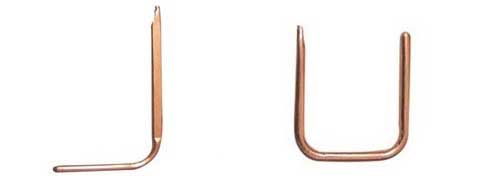
Is L-shaped or U-shaped more efficient?
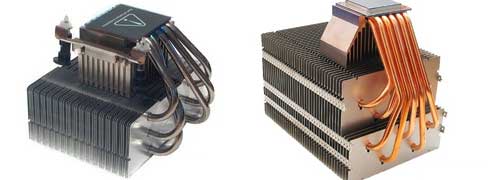
How much does the number of heat pipes affect performance?
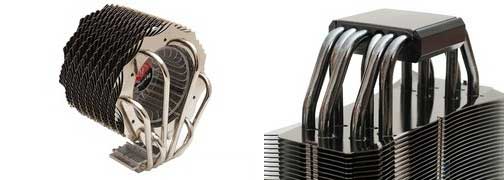
How big is the performance gap between 6mm and 8mm heat pipes?
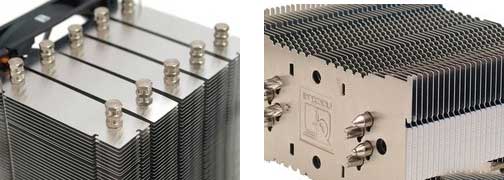
Which is better or worse between wearing Fin process and welding process?
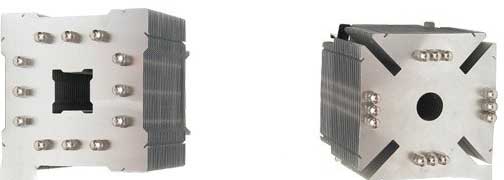
Which heat pipe arrangement is more reasonable?
1. Thermalright True Black 120 U
The principle of the type heat pipe is to use the middle as the evaporation area and the two ends of the heat pipe as the condensation area, thus achieving the effect of two heat pipes. It will naturally get twice the result with half the effort when used on a tower radiator, but it cannot be used if it is a horizontal radiator. U-shaped heat pipe, we use the following owl NH-C12P to explain the specific reasons.
Limin True Black 120 is a textbook-like radiator. The reason why it is called a textbook is that its design structure is complete and reasonable, but it lacks new ideas. Limin obviously did not intend to make True Black 120 a new flagship. The visual impact brought by blackening and 6 heat pipes is stronger than the performance improvement. The old fin size is doomed to its unchanging tragic fate - in the crazy heap size. The times have been abused by the "big old and rude" again and again.

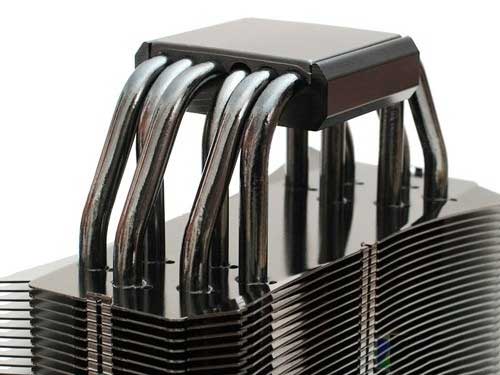
A classic is called a classic because it has not been surpassed. The 6 heat pipes of Limin True Black 120 prevent it from becoming "non-mainstream" in the era of 5*8mm, and the bending processing and arrangement spacing of the fins are still the proud capital. It has good performance in the range, which is completely different from many pseudo-high-end models that rely on high-speed rotation to barely enter the house.
2. Noctua NH-C12P
Owl is a radiator manufacturer in Austria. As a branch of the Germanic nation, Austria has inherited a rigorous and meticulous social culture. You can see the atmosphere of this excellent culture from Owl's fan products. The owl fan adopts SSO bearing, which not only adds the traditional magnetic levitation design, but also has a magnet inlaid behind the bearing to achieve a perfect dynamic balance, which is difficult for traditional magnetic levitation fans.
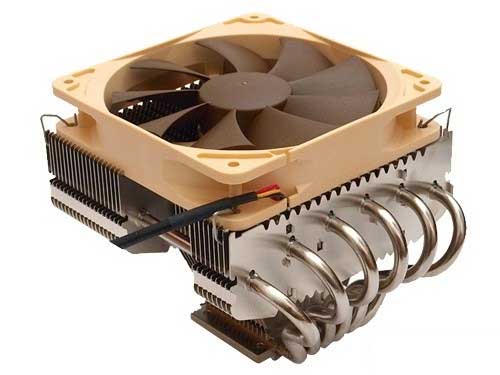
As we all know, the bending of heat pipes will lead to the reduction of heat conduction efficiency. Generally, horizontal radiators have only 2 bends, which occur when the heat pipes are led from the bottom of the radiator to the fin array.
The owl heat pipe has more than 2 bends. The three-turn 6*6mm L-shaped heat pipe is supplemented by the owl's low-speed silent fan, which is difficult to drive the huge heat exhaust above to work effectively.
The second bend of the owl NH-C12P is actually necessary, because the design concept of the NH-C12P is to raise the heat row as high as possible through a long heat pipe to obtain an ideal heat dissipation surface area, but if no treatment is done to make the long The protruding heat pipe will inevitably lead to serious compatibility problems. This is why the horizontal radiator cannot use the U-shaped heat pipe design. In the face of increasingly large motherboard radiators, radiator manufacturers put compatibility in the first place, and efficient U-shaped heat pipes have no relationship with horizontal radiators.
The arrangement of the U-shaped heat pipes is obviously more in line with the CPU’s requirements for heat conduction performance. The tower radiator can be elevated by the heat pipes without any worries, stacking an amazing heat dissipation area, supplemented by the double heat pipe effect of the U-shaped heat pipes. , and can also blow the heat out of the box, which naturally becomes the current mainstream design scheme.
3. Scythe Orochi
The highest honor in the field of radiators is not to be imitated by other manufacturers, but to be looked up to and become a unique existence in the world in a lament that cannot be reached. The Japanese Scythe is worthy of our words: without the scythe, a corner of the radiator field is eclipsed. Because of the lack of Scythe, the radiator lacks the ninja system that inherits the silent bloodline and the Wuji system that challenges the benefit of the people, and it is even more impossible to have the Orochi snake, the pinnacle of natural convection.
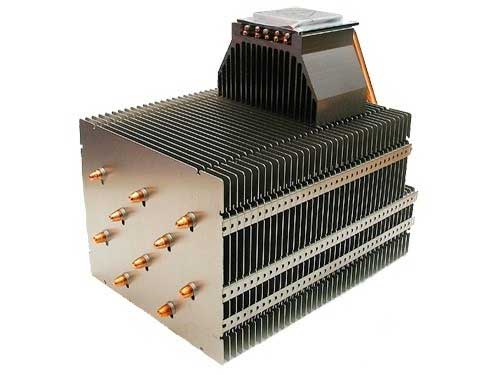
Scythe's Orochi radiator uses an unprecedented ten heat pipes, arranged five on each of the upper and lower tiers. Closest to the CPU, the lower heat pipe with the strongest heat absorption effect corresponds to the top fin array with stronger heat dissipation effect; the upper five heat pipes with lighter burden correspond to the closer fin array. This layout is to balance the heat of the entire fin array, while making the burden of each heat pipe as balanced as possible. Balanced heat pipe efficiency, balanced fin heating, and wide fin spacing create such a heat dissipation product that is stacked but not compromised.
4. Scythe Andy Samurai Master
Scythe Andy Samurai Master is a very strange product. It is very different from Scythe's traditional design. Whether it is the fin arrangement or the heat pipe design, there is no Scythe shadow on it.
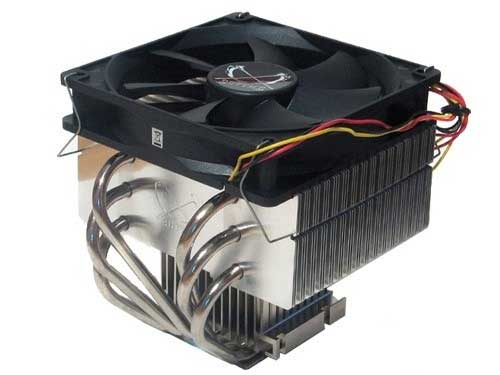
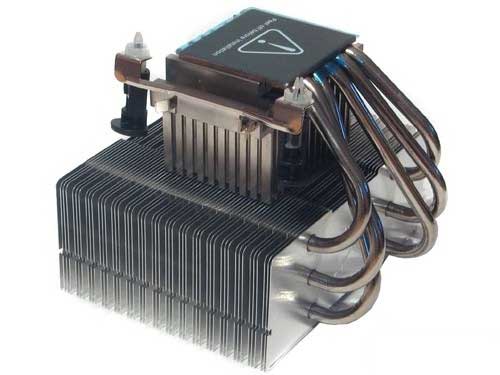
5. Thermalright IFX-14
A group of people today scolds the U120's radiator base as unforgivable garbage. The same group of people will clamor for the U120 to be the king of air cooling tomorrow, but it has been surpassed by a certain god. Of course, the problem of the radiator base has been automatically ignored at this time. Limin actually doesn't care that U120 is surpassed in reality or obscenity, because its glorious era has passed, and Limin's flagship has already been replaced by IFX-14, but it is estimated that it will take a long time for this radiator to become the king of air cooling. , because there is a condition that is too difficult to meet: there are domestic radiator samples that approach or equal its performance.
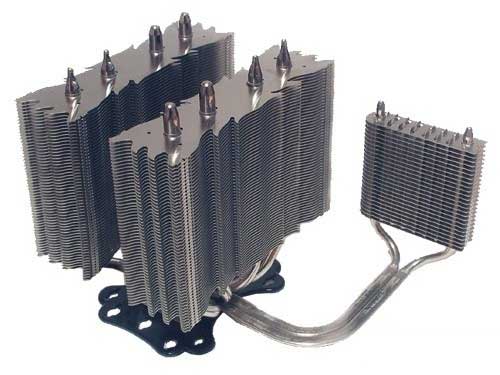
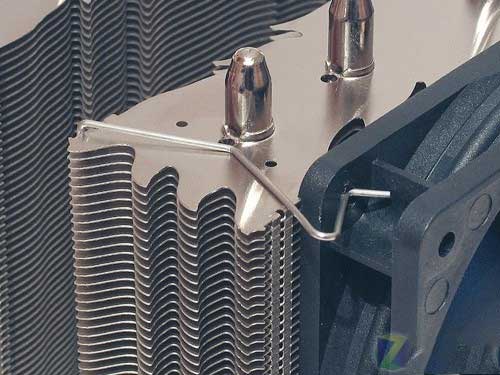
The theoretical data on the diameter of the heat pipe is: 6mm diameter heat pipe can bear about 15W power consumption, 8mm diameter heat pipe can bear about 25W power consumption, it can be seen that 8mm diameter heat pipe has sufficient advantages in heat conduction, but this is with sufficient fins. ideal performance. We can explain the influence of heat pipes and fins on the overall heat dissipation performance with the barrel principle. Heat pipes and fins should be perfectly matched, and any short board on either side will degrade the overall performance of the radiator.
The theoretical heat conduction performance of four 8mm U-shaped heat pipes is 4×2×25W=200W. It can be seen that heat pipes are usually not the bottleneck. The key to the performance breakthrough of high-end radiators is to expand the heat dissipation surface area as much as possible while controlling the volume and weight.
The total heat dissipation area of IFX 14 108 fins reaches more than 10,000 square centimeters. The double-tower structure fan is placed in the middle, and the fins can work more effectively under the double wind of air extraction and blowing. This double-tower structure also avoids the traditional High shear wind noise caused by the built-in fan.
6. Thermaltake SpinQ
Tt's SpinQ uses a 6*6mm heat pipe specification. After the L-shaped heat pipe is bent twice, how much heat conduction performance is left? However, such a radiator is equipped with huge annular fins. We don't know the specific heat dissipation area for the time being, but the bottleneck of the radiator is obviously on the heat pipe, but the severity is unknown. Turbulence aside, this product does not have the comprehensive cooling characteristics that a horizontal radiator should have, nor the high efficiency that a tower radiator should have.

For tower heat pipe radiators, the heat pipe size of 6*6mm or 4*8mm is already the limit of reason. Cooling manufacturers should focus more on how to expand the heat dissipation surface and how to improve resource utilization, rather than taking Bigger, heavier, higher-priced monsters irritate consumers.
7. Scythe Ninja
The Ninja is widely known as the Scythe radiator, and its design philosophy represents the core value of Scythe: the perfect performance/noise ratio in the low rev range. The famous Orochi is based on the design idea of ninja to expand the scale.
Ninja uses a unique double-layer heat pipe design, 6 U-shaped heat pipes are equivalent to 12 heat pipes, and every heat emitted by the CPU is transferred to the evaporation end at the fastest speed. The most notable feature of the Ninja series is the arrangement of fins with a particularly large spacing. The large spacing is to utilize natural convection as much as possible, and at the same time, it will have a relatively good performance at 500-800RPM.
8. Scythe Ninja 2
Scythe Ninja 2 completely follows the loose fin spacing of the first generation, and at the same time expands a certain amount of heat dissipation surface area. Just relying on the size of the fins, Ninja II has surpassed the previous work, not to mention that Ninja II also reorders the heat pipes.

The biggest improvement of Scythe Ninja 2 is the heat pipe sorting, 6 6mm heat pipes are shuffled, each heat pipe provides the same amount of work. The arrangement of the heat pipes of the CPU cooler is the most important part of the design of the heat sink, which determines the efficiency of the heat pipes.
9. Noctua NH-U12P
There are two common fixing processes for heat pipes and fins, one is to wear Fins, and the other is to weld.
Usually we think that the thermal resistance of the welding process is the lowest, and the fixing is firm, and the fins are not easy to loose and deform. The cost of the Fin-piercing process is lower, and the thermal resistance of the contact surface is theoretically higher than that of welding. In fact, there is no obvious performance gap between the excellent Fin-piercing process and the welding process. The key depends on the manufacturer's process level.
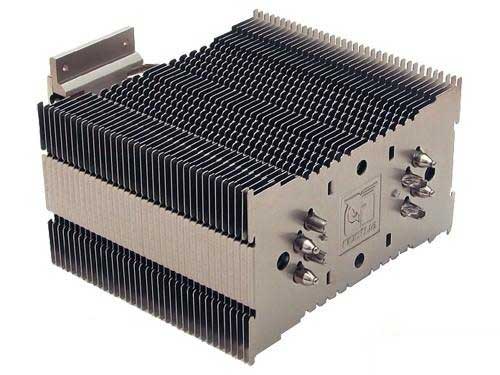
Noctua NH-U12P is a tower heat pipe radiator, it adopts 4*6mm heat pipe specification, U-shaped heat pipe is equivalent to 8 heat pipes, supplemented by a huge evaporation end. The fin array of the NH-U12P seems to be full of weight. In fact, the actual weight of this radiator is only 770g, which is regarded as a standard body among high-end radiators.
Because considering how to use the standard 1300RPM fan to drive the entire heat row to work efficiently, the NH-U12P uses a fin arrangement with a large spacing, which gives the impression of being bloated. For a 1300RPM 12cm fan, there is absolutely no need to consider the sound of cutting wind, but the NH-U12P still carefully waves the fins to achieve the ultimate mute effect.
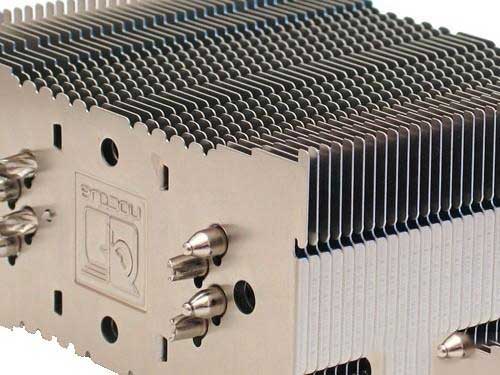
A distinct feature of the welding process is that holes are welded near the heat pipes. As shown in the figure above, there is a small round hole under each heat pipe that conducts with the heat pipe. If it is a Fin process, the top fin must be reinforced, otherwise the fin will easily fall off, such as the Scythe Mugen 2 below.
10. Scythe Mugen 2
Scythe's Mugen 2 is also the Promise Series we are talking about. If the Ninja Series is positioned to be quiet, then the Promise Series is a family that seeks powerful performance. The Mugen 2's fin array is divided into five independent modules, according to Scythe's explanation, dense and independent fin clusters are more likely to be driven by a 1200RPM fan. The size of the 5*6mm heat pipe is difficult to define. Traditional thinking believes that the burden of the edge heat pipe will be lower than that of the middle heat pipe, and the fins corresponding to the middle heat pipe are exactly the blind area of the fan, so the method of evenly distributing the evaporation end like Mugen 2 is more puzzling. .
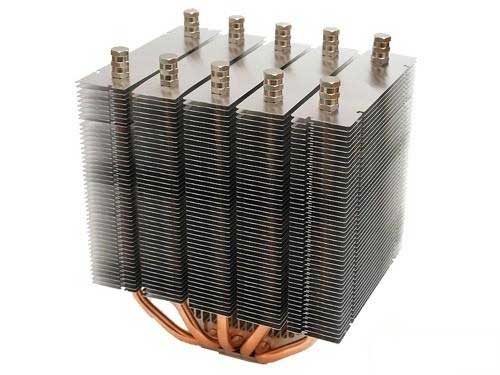

The fin-wearing process like Mugen 2 is more agreeable. The reason that fin-wearing has been criticized by consumers is that many manufacturers treat the top fins too rough, either without reasonable reinforcement, or with about 1/10 of the fins used. It is actually the end of the heat pipe that is not in effective contact with the heat pipe at all.
11. Thermalright AXP-140
The tower heat pipe radiator is nothing more than using a heat pipe to raise the evaporation end to expand a considerable heat dissipation surface area. At the same time, the U-shaped heat pipe brings cheap and efficient heat conduction performance, and the heat is discharged through a 12cm fan. The development of this cooling architecture has reached its peak today. In other words, it is difficult to make breakthroughs. At this time, the horizontal radiator is back with a new way of using heat pipes.
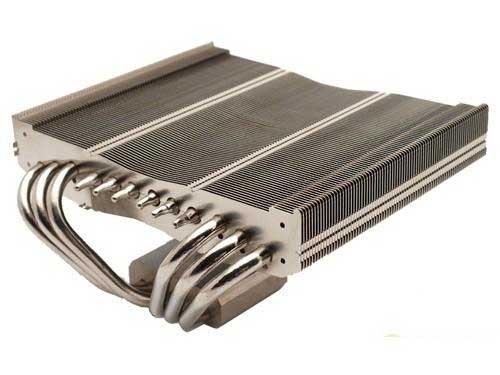
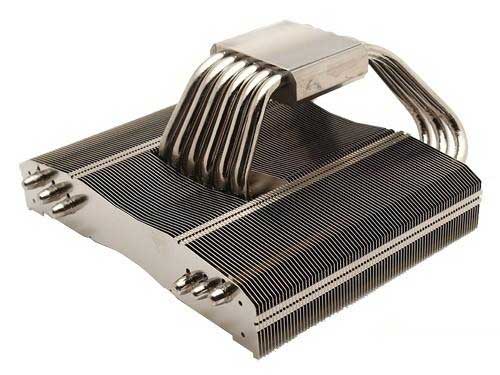
12. Scythe Zipang
Another good news of the horizontal radiator is the change of the chassis. The traditional 38°C air duct design is facing some challenges with new thinking. The next-generation air duct chassis headed by the Raven II continues to promote changes. become the standard trend. When the power supply is placed down, most chassis manufacturers choose to open holes on the top of the chassis. This design greatly reduces the requirements of the chassis air duct on the radiator. In addition, Limin and Scysis's efficient U-shaped heat pipe design, horizontal radiator There is a lot of capital to compete with the tower radiator, and the 14cm fan blows vertically to the entire CPU power supply area is an advantage that the tower is difficult to achieve.
Radiators like Limin AXP-140 and Scythe Zipang are as strong as tower heat pipes. They need matching chassis products. The comprehensive cooling performance of horizontal heat pipe radiators is a tower type that is addicted to CPU cooling. What the architecture cannot do, it is more in line with the needs of ordinary consumers for platform cooling

